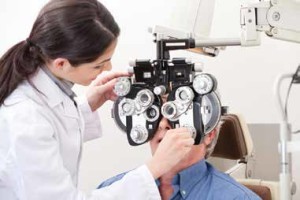WHAT OUR TEARS ARE SAYING – Dry Eye Syndrome
Dry eye syndrome (DES) affects up to 30 percent of the population over the age of 50. DES can be a chronic and in some cases debilitating condition impacting our comfort, vision and quality of life.
DES typically presents with symptoms of dryness, burning, tearing, blurry vision, fluctuating vision, or a sandy or gritty sensation in the eyes. Some patients may have no symptoms at all or may incorrectly attribute these symptoms to other conditions affecting their eyes.
Age is a major risk factor for DES. Females are more commonly affected than males especially those women on hormone replacement therapy. Additional risk factors include low humidity environments, prolonged reading or computer use, and poor dietary habits.
At the center of any discussion on DES are tears. Tears are made of three primary layers including an outer lipid or oil layer, a middle aqueous or water layer and a layer of sugary proteins known as mucins. In reality these components exist in a much more dynamic and continuously mixing environment than the layer model suggests.
 The diagnosis of DES is made after consideration of patient symptoms and a thorough eye examination. Diagnostic tools include symptom questionnaires, assessments of tear quality and quantity, observation of oil glands located along the eyelid as well as topical dyes that allow for the assessment of inflammation and irritation on the surface of the eye.
The diagnosis of DES is made after consideration of patient symptoms and a thorough eye examination. Diagnostic tools include symptom questionnaires, assessments of tear quality and quantity, observation of oil glands located along the eyelid as well as topical dyes that allow for the assessment of inflammation and irritation on the surface of the eye.
These tests help distinguish the two major forms of DES; aqueous deficient and evaporative dry eye. In aqueous deficient dry eye, the production of the water layer of tears is generally low resulting in minimal tears. In some individuals the eye responds to an initial lack of tears by attempting to over compensate with excessive tear production. Unfortunately these tears are of poor quality and generally full of inflammatory molecules that do little to address the underlying deficiency. In contrast, evaporative dry eye is centered on poor production or composition of the oil layer.
The oil layer helps maintain tears on the eye by preventing their premature evaporation. With an imbalance in the oil layer, tears evaporate from the eyes quickly. Clinically many patients exhibit signs of both forms of dry eye.
The treatment of DES varies depending on the type and severity of DES. Tear supplementation with artificial tears is a staple in the management of DES. Other first-line options include oral Omega-3 supplements, warm eyelid compresses and eyelid cleansers. In more advanced cases, prescription medications including Restasis TM, other topical anti-inflammatories and oral medications may be employed.
Punctal occlusion, a process by which the tear drainage system is closed to allow for the accumulation of our own tears, is often performed when topical therapies fail to provide relieve.
Dry eye syndrome is a common condition leading to significant physical and visual discomfort for many people. If you are experiencing symptoms, talk to your eye care provider for an individualized treatment approach.


Leave a Reply
Want to join the discussion?Feel free to contribute!